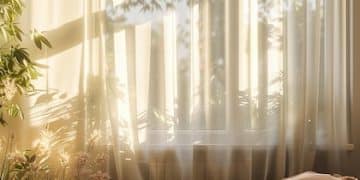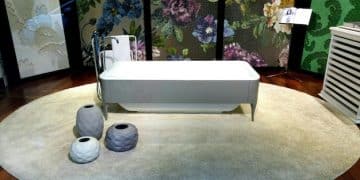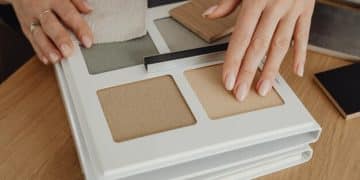How to Incorporate Plants into Your Home Decor: A Guide to Indoor Greenery
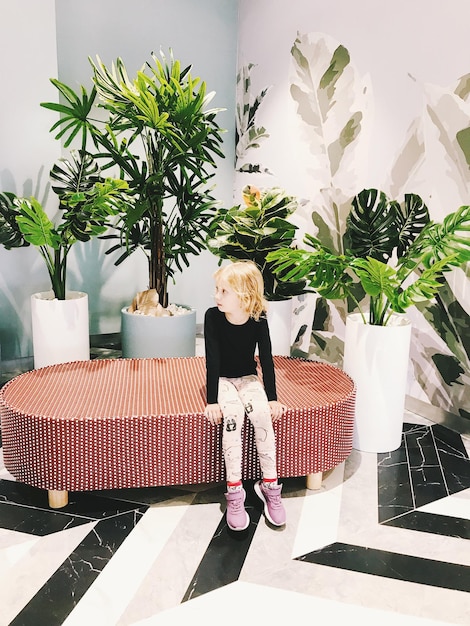
Anúncios
Achieving indoor greenery in home decor involves selecting suitable plants, understanding light and space requirements, and creatively integrating them into various room aesthetics to foster a vibrant and healthier living environment.
Transforming your living space into a vibrant sanctuary can be a truly enriching experience. One of the most effective and aesthetically pleasing ways to achieve this is by learning How to Incorporate Plants into Your Home Decor: A Guide to Indoor Greenery. Beyond mere aesthetics, introducing plants offers numerous benefits, from purifying the air to enhancing mood, making your home not just look better, but feel better too. This guide delves into practical steps and creative ideas to help you seamlessly integrate the beauty of nature into every corner of your domestic environment.
The undeniable benefits of indoor plants beyond aesthetics
Integrating plants into your home decor extends far beyond simply adding a touch of green to a room; it’s about cultivating a healthier, more refreshing living environment. The immediate visual appeal is just the tip of the iceberg when considering the profound impact indoor greenery can have on both your physical and mental well-being.
From improving air quality to fostering a sense of calm, plants contribute significantly to transforming a house into a home. This often overlooked aspect of interior design is, in fact, a powerful tool for enhancing daily life. Understanding these deeper benefits can provide a more compelling motivation for turning your home into a verdant oasis.
air purification and health advantages
One of the most well-documented advantages of indoor plants is their remarkable ability to purify the air. Plants naturally absorb carbon dioxide and release oxygen, creating a fresher atmosphere. Beyond this fundamental gaseous exchange, many species are highly effective at filtering out harmful toxins and volatile organic compounds (VOCs) that can be present in modern homes from furniture, cleaning products, and building materials.
- Formaldehyde Reduction: Plants like philodendrons and spider plants are known to significantly reduce formaldehyde levels, a common pollutant.
- Benzene and Trichloroethylene Absorption: Peace lilies and chrysanthemums excel at removing benzene and trichloroethylene, found in inks, paints, and detergents.
- Humidity Regulation: Transpiration from plants naturally increases indoor humidity, which can alleviate dry skin, irritated eyes, and respiratory issues, particularly in arid climates or air-conditioned environments.
boosting mental well-being and productivity
The mere presence of nature has been linked to numerous psychological benefits. Bringing greenery indoors can markedly reduce stress and anxiety, creating a more tranquil and comforting atmosphere. Studies suggest that environments with plants can lead to lower blood pressure and heart rate, promoting a sense of calm and relaxation.
Moreover, for those who work from home or engage in creative pursuits, plants can be a subtle yet powerful productivity enhancer. The visual appeal and refreshing presence of greenery can improve focus, stimulate creativity, and reduce mental fatigue, leading to a more engaging and productive workspace.
Ultimately, the benefits of indoor plants transform our living spaces into more than just aesthetically pleasing areas. They become healthier, more mindful environments that actively contribute to our overall well-being, making the effort of incorporating them into decor truly worthwhile.
Choosing the right plants for your home and lifestyle
The first step in successfully incorporating plants into your home decor is selecting the right species. This isn’t just about what looks good; it’s about finding plants that thrive in your specific home environment and match your lifestyle commitments. Understanding the needs of different plants can prevent frustration and ensure your indoor greenery flourishes.
Consider factors such as available light, humidity levels, and how much time you’re willing to dedicate to plant care. A mismatch between a plant’s needs and your home’s conditions, or your personal habits, can quickly turn a beautiful decorative element into a struggling mess. Thoughtful selection is key to a sustainable and rewarding indoor plant journey.
evaluating light conditions and placement
Light is arguably the most critical factor for plant health. Different plants have vastly different light requirements, ranging from low-light lovers to sun-worshippers. Before you buy any plant, assess the natural light in various rooms throughout your home. Observe how light shifts throughout the day and year.
- Low Light: Areas far from windows or in north-facing rooms. Suitable plants include snake plants, ZZs, and pothos.
- Medium Light: East or west-facing windows, or slightly set back from south-facing windows. Ideal for peace lilies, philodendrons, and ferns.
- Bright Indirect Light: Near a south-facing window, but with a sheer curtain or slightly away from direct sun. Most tropical plants thrive here, such as monsteras and fiddle-leaf figs.
- Direct Light: Unobstructed south-facing windows. Perfect for succulents, cacti, and certain herbs.
Understanding these categories will guide your plant choices and help you place them where they can genuinely prosper, becoming thriving elements of your decor.
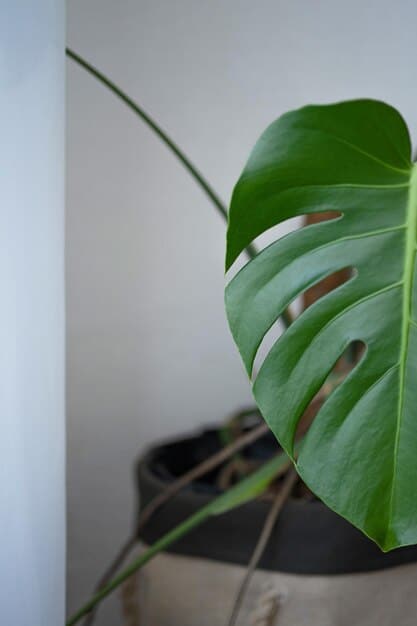
considering plant care and maintenance levels
Your lifestyle plays a significant role in successful plant keeping. Do you travel frequently? Are you a forgetful waterer or an over-enthusiastic one? Be honest about how much time and effort you’re willing to invest. Some plants are incredibly forgiving, while others demand consistent attention.
For beginners or those with busy schedules, opt for low-maintenance plants. These typically require less frequent watering, tolerate a wider range of conditions, and are less prone to pests. Examples include the aforementioned snake plants, ZZ plants, and various types of succulents. If you enjoy a more hands-on approach and have the time, you can explore plants like orchids or fiddle-leaf figs, which, while stunning, demand more specific care routines.
Consider also the size and growth habit of the plant. A small desk plant might be perfect for a compact living space, while a large, sprawling tree might dominate a room. Research is essential here; understand not just the immediate needs but also the long-term growth potential and maintenance demands before bringing a new green friend home.
Strategic placement: where and how to integrate plants
Once you’ve chosen your plants, the next challenge is strategic placement. It’s not enough to simply put a plant in any empty corner; thoughtful positioning can dramatically enhance a room’s aesthetic and the plant’s health. Consider the scale of the plant relative to the furniture, the path of natural light, and the overall harmony of the space.
Effective integration means thinking of plants as essential design elements, not just afterthoughts. They can soften harsh lines, fill awkward spaces, create focal points, and even define zones within an open-plan layout. The goal is to make plants feel like an organic part of your home, blending seamlessly with your existing decor.
creating focal points with statement plants
A well-placed, large statement plant can instantly become the focal point of a room, drawing the eye and adding a dramatic natural element. These are often larger species like the fiddle-leaf fig, Monstera deliciosa, or a mature bird of paradise. They work particularly well in living rooms, dining areas, or spacious entryways.
When using statement plants, ensure they have enough space to grow and spread without feeling cramped. Place them in decorative planters that complement your existing furniture and color scheme. A tall plant can also add vertical interest, particularly in rooms with high ceilings, breaking up horizontal lines and adding dynamism to the space.
Consider the background against which the plant is placed. A plain, light-colored wall can make green foliage pop, while a patterned wallpaper might clash. The pot itself is also part of the decor; choose materials and finishes that align with your aesthetic, whether it’s minimalist ceramic, rustic terracotta, or sleek metal.
enhancing small spaces and awkward corners
Plants aren’t just for large rooms; they can work wonders in compact living areas, transforming small spaces and awkward corners into charming green vignettes. In these situations, scale is paramount. Opt for smaller, more compact plants or those with a trailing habit that can be hung or placed on shelves.
- Vertical Greenery: Utilize hanging planters or wall-mounted shelves to add plants without taking up precious floor space. Pothos, philodendrons, and spider plants are excellent trailing options for this.
- Tiered Stands: A multi-tiered plant stand can effectively display several smaller plants in a corner, creating a mini-garden vertically.
- Bathroom Oasis: Bathrooms, with their inherent humidity, are ideal for plants like ferns, orchids, and peace lilies. A small plant on the vanity or a trailing one from a shelf can add a spa-like feel.
- Underutilized Spaces: Think beyond traditional corners. A plant on a window sill, atop a bookshelf, or even a small succulent on a bedside table can bring life to often-ignored areas.
The strategic use of plants in smaller areas demonstrates that even the most compact homes can benefit from a touch of nature, proving that green decor is versatile and adaptable to any spatial constraint.
Styling with planters and accessories: elevating your plant game
The beauty of indoor plants extends beyond their foliage; the containers and accessories chosen to accompany them play a crucial role in overall home aesthetics. Planters are no longer just functional items; they are decor statements that can tie a room together, add texture, or introduce pops of color. Selecting the right planter can elevate a simple plant into a sophisticated design element.
Think of planters as extensions of your design style. Do you prefer a minimalist look, a bohemian vibe, or a modern industrial feel? There’s a planter for every aesthetic. Beyond the pot, various accessories can enhance your indoor greenery, from propagation stations to stylish watering cans, each contributing to the visual narrative of your plant display.
choosing the right planter for aesthetics and health
The choice of planter impacts both the plant’s well-being and the room’s decor. Materials, size, drainage, and style all need consideration. Terracotta pots, for example, are porous and allow for better airflow to roots, making them ideal for plants that prefer drier conditions, while glazed ceramic or plastic pots retain moisture more effectively.
- Material:
- Ceramic/Clay: Classic, versatile, comes in many colors and finishes. Generally good for plants.
- Terracotta: Excellent drainage and breathability, prone to drying out faster. Ideal for succulents and cacti.
- Plastic: Lightweight, inexpensive, retains moisture, suitable for moisture-loving plants. Less aesthetic on its own, often used as an inner pot.
- Metal: Modern and sleek, but can rust or heat up. Best for larger, indirect plantings.
- Woven/Basket: Adds texture, often used as decorative covers for plastic nursery pots.
- Size: Ensure the planter is appropriately sized for the plant’s current root ball and allows for some growth. Too large a pot can lead to overwatering, while too small can stunt growth.
- Drainage: Crucial for plant health. Always choose pots with drainage holes or be prepared to use a cachepot (a decorative outer pot) with the plant in a nursery liner that you can remove for watering.
The style of the planter should complement your existing decor. A minimalist ceramic pot for a sleek modern home, a macrame hanger for a bohemian space, or a concrete planter for an industrial loft. This thoughtful pairing creates a harmonious and visually appealing display.
accessories that enhance your indoor garden
Beyond the primary planter, several accessories can not only be functional but also add decorative flair to your indoor plant arrangements. These elements contribute to the curated look of your plant collection, making it feel more intentional and stylish.
- Plant Stands: Elevate plants to varying heights, creating visual interest and often helping them receive more light. Choose stands that match your decor style, from mid-century modern to rustic wooden designs.
- Watering Cans: A stylish watering can can be left out as part of the decor, eliminating the need to hide it away. Look for designs in copper, brass, or sleek minimalist forms.
- Misters: Especially for humidity-loving plants, a decorative mister can be both practical and beautiful, adding a touch of elegance to your plant care routine.
- Decorative Pebbles/Moss: A layer of decorative pebbles or moss on top of the soil can add a finished look to your planters, hide soil, and sometimes even retain a bit of moisture.
- Lighting: For plants in darker areas, consider adding a stylish grow light. Many modern grow lights are designed to be aesthetically pleasing and can double as accent lighting.
By carefully selecting planters and accessories, you transform your indoor plants from mere living things into integral components of your home’s design, reflecting your personal style and enhancing the overall ambiance.
Creative display ideas for every room
Incorporating plants into home decor is an art form, allowing for endless creativity beyond simply placing a pot on a table. Each room in your home presents unique opportunities to integrate greenery in innovative ways, enhancing its functionality and aesthetic appeal. Think about how plants can contribute to the overall mood and purpose of a space, whether it’s a tranquil bedroom retreat or a vibrant social living area.
The key is to consider the dynamics of each room – its size, light, existing furniture, and how it’s used. This deliberate approach ensures that plants feel like an organic extension of the design, rather than an afterthought, allowing them to truly transform and define spaces.
living rooms and dining areas: grand statements and subtle accents
Living rooms and dining areas are often the heart of the home, making them ideal canvases for incorporating plants. These spaces typically offer more room for larger, statement-making plants that can command attention and define an area. A grand fiddle-leaf fig or a towering bird of paradise can anchor a corner, while a collection of smaller plants can create a cohesive green corner.
- Vertical Gardens: Consider a living wall or a series of wall-mounted planters to add a dramatic green feature without occupying floor space.
- Groupings: Cluster plants of varying heights and textures together in a corner or on a side table. This creates a lush, natural vignette that feels organic and visually rich.
- Tabletop Centerpieces: For dining tables or coffee tables, opt for low-profile arrangements that don’t obstruct views. Think small succulents, terrariums, or a simple potted herb that adds a fresh scent.
- Shelf Styling: Weave trailing plants like pothos or string of pearls through bookshelves, allowing them to drape gracefully and add a natural softness to hard lines.
By blending large focal points with more intricate, subtle accents, living and dining areas can achieve a balanced and inviting atmosphere, making plants an integral part of entertaining and relaxation.
bedrooms and bathrooms: creating tranquil and spa-like atmospheres
Bedrooms and bathrooms offer distinct opportunities for plant integration, each lending itself to creating specific atmospheres. In bedrooms, plants can contribute to a sense of peace and calm, while in bathrooms, their ability to thrive in humidity makes them perfect for a lush, spa-like feel.
For bedrooms, choose plants that contribute to air quality and don’t require excessive maintenance, avoiding anything too fragrant. Snake plants, capable of producing oxygen at night, and peace lilies, known for removing toxins, are excellent choices. A small plant on a bedside table or a hanging plant can introduce a refreshing natural element without overpowering the space.
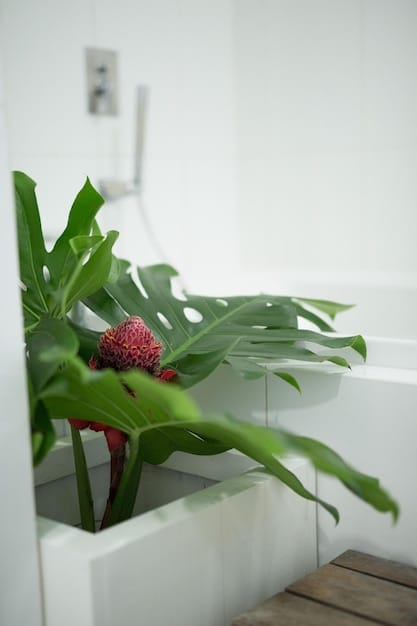
Bathrooms, often humid and warm, are perfect for tropical plants. Ferns, orchids, and even small palms can thrive here. Place them on windowsills, shelves, or even hang them from the ceiling to maximize greenery in a compact space. The presence of these plants not only adds visual beauty but also complements the relaxing, cleansing environment of a bathroom, turning it into a personal sanctuary.
In both spaces, the goal is to enhance the existing atmosphere: tranquility in the bedroom, and a fresh, serene escape in the bathroom. The right plants, thoughtfully placed, can achieve this effortlessly.
Overcoming common challenges and maintaining healthy plants
While incorporating plants into your decor offers immense rewards, it’s not without its challenges. Even experienced plant enthusiasts encounter issues. Understanding common problems and knowing how to address them is crucial for maintaining a thriving indoor garden. From pesky pests to watering woes, proactive care and informed adjustments can save your plants and your peace of mind.
The key is to observe your plants closely. They communicate their needs through their leaves, stems, and overall appearance. Learning to interpret these signals allows you to intervene before minor issues escalate, ensuring your green decor remains vibrant and healthy for years to come.
understanding common plant problems and solutions
Many plant struggles stem from a few core issues: improper watering, insufficient light, and pest infestations. Identifying the root cause is the first step toward a solution. Often, a quick adjustment to your care routine can make a significant difference, reviving a struggling plant.
- Overwatering vs. Underwatering:
- Overwatering: Yellowing leaves, mushy stems, rotten smell. Solution: Let soil dry out more between waterings; check drainage.
- Underwatering: Drooping leaves, crispy edges, dry soil. Solution: Water thoroughly until water drains from the bottom.
- Light Issues:
- Not Enough Light: Leggy growth, pale leaves, lack of flowering. Solution: Move to a brighter spot or supplement with a grow light.
- Too Much Light: Scorched spots on leaves, fading color. Solution: Move further from direct sun or provide filtered light.
- Pests: Small insects on leaves or stems, sticky residue. Solution: Isolate affected plant, wipe leaves, use insecticidal soap or neem oil. Regular inspection helps early detection.
By recognizing these common signs and applying appropriate remedies, you can address most plant ailments effectively, ensuring your indoor greenery remains a source of joy, not frustration.
long-term care and seasonal adjustments
Maintaining healthy plants is an ongoing process that requires adapting to their needs as they grow and as seasons change. Just like outdoor gardens, indoor plants benefit from regular attention and occasional adjustments to their environment and care routine. Understanding these long-term commitments ensures their continued vitality and aesthetic contribution.
Regular feeding is essential, as plants deplete nutrients from their potting mix over time. Fertilize during the growing season (spring and summer) at half strength or as per product instructions, and reduce or stop feeding in fall and winter when growth slows. Pruning not only helps maintain a plant’s shape and size but also encourages bushier growth and removes any dead or yellowing foliage, keeping the plant looking its best.
Repotting every one to two years, or when a plant becomes root-bound, provides fresh soil and space for growth. When repotting, choose a container that is only one or two inches larger in diameter to avoid overwatering issues. Dusting leaves regularly also improves light absorption and prevents pest accumulation.
Seasonal changes, especially in light and temperature, necessitate adjustments. In winter, plants generally require less water and prefer cooler, less humid conditions. Some may benefit from supplemental lighting if natural light significantly diminishes. Conversely, summer might require more frequent watering and protection from intense direct sun.
Consistent observation and a willingness to tweak your routine are the hallmarks of a successful indoor plant parent. By providing ongoing care and adapting to your plants’ evolving needs, you ensure they remain vibrant, healthy components of your home decor for years to come.
The future of indoor greenery: sustainability and innovation
The integration of plants into home decor is not merely a passing trend; it’s an evolving practice deeply intertwined with principles of sustainability and continuous innovation. As awareness grows about environmental impact and resource conservation, the way we cultivate and incorporate indoor greenery is also shifting towards more eco-conscious methods. This forward-looking perspective explores how our relationship with indoor plants can become even more sustainable and technologically advanced.
From embracing eco-friendly plant care products to exploring advanced cultivation techniques, the future of indoor greenery promises to be as thoughtful as it is beautiful. It’s about creating living spaces that not only look good but also do good for the planet.
eco-friendly practices for your indoor garden
As consumers become more environmentally aware, the focus shifts to ensuring our plant hobby is as sustainable as possible. This involves choices ranging from the origins of our plants to the everyday products we use for their care.
- Sustainable Sourcing: Prioritize purchasing plants from local nurseries or reputable growers who practice sustainable horticulture and avoid potentially over-harvested wild varieties.
- Reusing and Recycling: Minimize waste by reusing plastic nursery pots for propagation or as inserts for decorative planters. Consider DIY solutions for plant care, like making your own compost tea from kitchen scraps for natural fertilization.
- Eco-friendly Products: Opt for organic pest control methods, such as neem oil or insecticidal soaps, over harsh chemical pesticides. Choose peat-free potting mixes to reduce the environmental impact associated with peat harvesting.
- Water Conservation: Implement efficient watering techniques, like bottom-watering, to minimize water waste. Collect rainwater for your plants, especially if you live in an area with potable water concerns.
Embracing these eco-friendly practices allows us to enjoy the beauty and benefits of indoor plants while actively contributing to a healthier planet, aligning our decorative choices with broader ecological values.
technological advancements in plant care
The world of indoor gardening is rapidly being shaped by technological innovation, making plant care more accessible, efficient, and sophisticated. These advancements help overcome common challenges and allow even novice plant enthusiasts to succeed, transforming traditional plant care into a more data-driven practice.
- Smart Planters & Sensors: Devices are now available that monitor soil moisture, light levels, temperature, and even nutrient availability, sending data directly to your smartphone. Some smart planters can even automate watering based on these readings, ensuring optimal conditions with minimal effort. This technology takes the guesswork out of plant care.
- Automated Grow Lights: Full-spectrum LED grow lights are becoming more energy-efficient and aesthetically integrated into home design. Many models now offer programmable timers and intensity settings, mimicking natural daylight cycles and ensuring plants receive adequate light even in low-light environments.
- Hydroponics & Aeroponics at Home: While traditionally larger scale, mini hydroponic and aeroponic systems are becoming more compact and user-friendly for home use. These soil-less systems allow plants to grow faster and more efficiently, using less water and often requiring less space, perfect for growing herbs or small vegetables indoors.
- Plant Care Apps & Databases: Numerous mobile applications now offer plant identification, care reminders, troubleshooting guides, and even community forums. These digital tools empower users with knowledge and support, helping them diagnose issues and learn best practices for their specific plant collections.
These innovations highlight a future where integrating plants into our homes is not only about aesthetics but also about leveraging technology to create thriving, sustainable indoor ecosystems. As these advancements become more mainstream, maintaining a flourishing indoor green space will become easier and more precise for everyone. The blend of nature and technology offers an exciting path forward for green living.
| Key Point | Brief Description |
|---|---|
| 🌱 Plant Benefits | Enhances air quality, reduces stress, and boosts mental well-being in your home. |
| 💡 Right Plant Choice | Select plants based on light, humidity, and your commitment to care. |
| 🎨 Strategic Placement | Use plants to create focal points or brighten small, awkward spaces. |
| 💧 Care & Innovation | Regular care combined with eco-friendly and tech solutions for thriving greenery. |
frequently asked questions about indoor greenery
For beginners, snake plants (Sansevieria), ZZ plants (Zamioculcas zamiifolia), pothos (Epipremnum aureum), and spider plants (Chlorophytum comosum) are excellent choices. They are known for their tolerance to various light conditions, infrequent watering needs, and general resilience, making them forgiving for those new to plant care.
Signs your plant needs more light include leggy, sparse growth, smaller new leaves, pale foliage, or a lack of flowering. Conversely, too much light can cause scorched spots or faded leaves. Observe your plant’s growth habits and leaf color, and adjust its placement accordingly to ensure optimal light exposure for its specific needs.
Watering frequency depends on the plant species, pot size, light, and humidity. A good general rule is to check the soil moisture. For most plants, water when the top inch or two of soil feels dry to the touch. Ensure proper drainage to prevent root rot, as overwatering is a common killer of indoor plants. Err on the side of underwatering rather than overwatering if unsure.
Yes, indoor plants are known to improve air quality by absorbing carbon dioxide and releasing oxygen during photosynthesis. Some plants, like peace lilies and snake plants, also filter out volatile organic compounds (VOCs) such as formaldehyde and benzene, which can be found in household products. While their impact is significant, a large number of plants would be needed for a dramatic effect.
In small spaces, consider vertical displays like wall-mounted planters, hanging baskets, or tiered plant stands to utilize height effectively. Shelves or bookcases can also house plants, allowing trailing varieties to drape gracefully. Terrariums or small succulent arrangements on windowsills or desks add greenery without occupying much footprint, maximizing aesthetic impact in compact areas.
conclusion
Embracing indoor greenery is more than just a decor choice; it’s an investment in creating a healthier, more tranquil, and visually engaging home environment. From selecting the appropriate plant species for your unique space and lifestyle to strategic placement and ongoing care, the journey of incorporating plants is both rewarding and transformative. As we look towards a future of sustainable living and technological integration, the role of indoor plants in our homes will only continue to grow, making them indispensable components of modern, mindful interior design. Begin your green journey today and witness the profound difference flourishing plants can make in your daily life.
